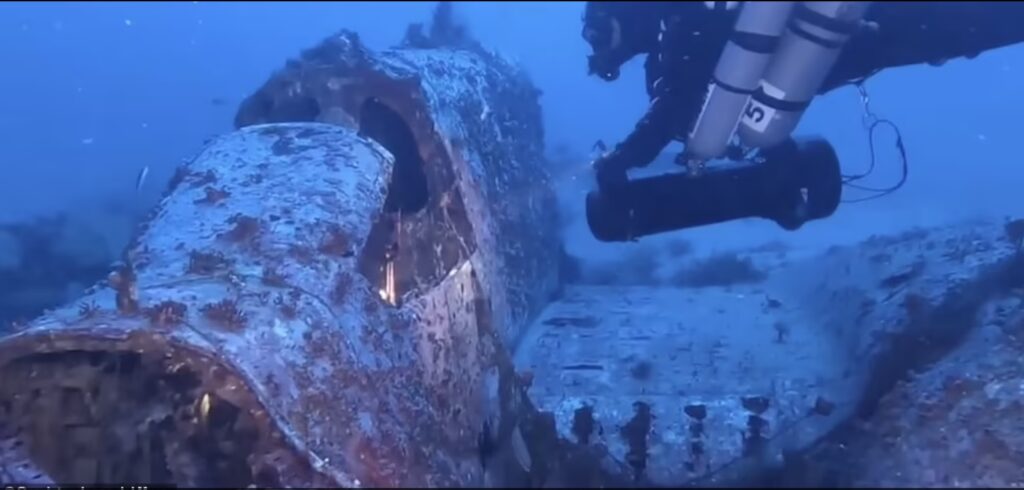
Six years ago, a fighter plane used by the Royal Air Force (RAF) was spotted at the bottom of the Mediterranean near the Italian island of Linosa.
A local diver, Fabio Portella, spent years trying to ascertain whether the aircraft was in one piece and retrievable.

Credit: Superintendence of the Sea
It had first been seen by a robot sub in 2016, a small ocean-going vehicle capable of scanning great depths on the seabed. It became a kind of stubborn mission for Portella, who was convinced the plane was intact and worth rescuing.
He was right.
The plane, a Martin Baltimore twin engine light attack aircraft, was built in the United States but used by the RAF. In June of 1942, it was flying over Italian seas when it fell almost 1,700 feet into the icy waters below.
Four personnel were inside: two airmen from the RAF, one from the Royal Australian Air Force (RAAF) and another from the Royal Canadian Air Force (RCAF). Although Alick Greaves, of the RAAF, died when the plane hit the water, the other three crew members were saved by nearby locals who witnessed the crash.

Linosa in the heart of the Mediterranean
Authorities can’t be certain why the plane went down. However, considering events at the time, experts assume either the engine failed, was deliberately shut off, or the aircraft was spotted and fired upon by the enemy.
What they can be sure of is that the engine was not running when the MB hit the water and began sinking. That turned out to be advantageous, as the crew could be saved and the plane did not explode.
Furthermore, the aircraft landed “softly,” experts say, meaning that it hit sand, and not hard materials that could have torn it apart on impact.
It is a unique and important find that officials are determined to retrieve.
According to a spokesperson for the Superintendence For The Cultural and Environmental Heritage of the Sea, a Sicilian body, “To date there (are) no reported aircraft from World War II so well preserved in Sicilian seas.” In other words, both Italian and British authorities are anxious to see the aircraft removed from the water and restored.

A Martin Baltimore attack aircraft in RAF livery.
Although the plane was spared too much damage after hitting the water, it is not in perfect shape. Experts say there is a crack running along the fuselage. And there is a piece missing from the left wing.
On balance, however, these are relatively minor issues that do not impact the significance of the find.
“It is in an exceptional state of preservation,” one official at the scene said. “(It is) of great historical and symbolic value.”
Authorities have put together a profile of the plane and its occupants. By examining war records and reviewing recorded eye witness testimony, a story of the plane’s final day has emerged.
It was on a reconnaissance mission, checking on enemy movements and positions in Italy when it was likely seen by Axis forces. Experts suggest the aircraft was then fired upon, and went down without the engine running – either because it was hit or because the pilot deliberately shut it off to lessen the damage upon impact.
Those speculations may be confirmed once the plane is out of the water and undergoing tests at a fully equipped facility.
Sicilian officials say they plan to continue working on the aircraft to see it safely out of the sea.